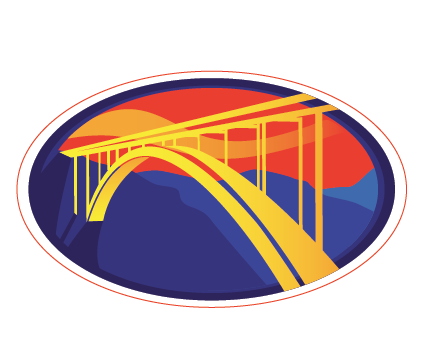Whitewater Rafting in West Virginia: The Beginnings
When you're standing high above the New River on Bridge Day, looking down from the Bridge, have you ever noticed those lucky folks who are rafting below? Whitewater rafting has become a favorite adventure for West Virginia visitors, on Bridge Day and other days alike. And with rafting season just around the corner for the most avid and hardy of paddlers, this seems like an opportune time to look back at the history of running the rapids of the New River.
This year marks 45 seasons that outfitters have been taking folks down the New River in rubber rafts. The first company to raft the New was Wildwater Unlimited. When the Dragan brothers started taking friends down the New River in 1968, one has to wonder if they ever dreamed it would become the industry it is today.
First Year
With two pick-up trucks and two rubber rafts that were custom made by an Army surplus boat company, Jon, Tom, Chris and Melanie Dragan started rafting the New during summer breaks from college. In Wildwater's first year, less than 80 people went down the river. But it was from this simple beginning that an industry was born.
For these pioneers from Pennsylvania, the New River was uncharted territory. There were no laws governing rafting at the time and the New River Gorge was not a National Park. Little was known about the rapids on the New. In fact, the names that these rapids possess now are due to these first trips. Most of the knowledge that paddlers of today have about the New River came from the early trips.
In order to build a “seasoned” crew for the rapids of the Lower section, the protocol for all guests was a two day trip. Day one consisted of guests paddling the much flatter and safer upper stretch to acclimate themselves to the water and the rafts.
On day two, guests tackled the rougher water of the Lower New. The rafts were all double guided for safety, a practice that Wildwater Unlimited continued until the early 1990's.
Influence
As there were no rules or regulations about whitewater rafting, the WV Division of Natural Resources was tasked to be the governing body of this new sport. The Dragans were influential in helping create many of the policies that are still in place today. Emphasis on safety was a huge concern. A few years later policies for company licensing and quotas, designed to prevent overcrowding, soon followed.
By 1971 a few more companies had entered the scene and eventually the state capped the number of licenses at 25. Today there is rafting on the Gauley, Cheat and Shenandoah, Big Sandy, Tygart, Potomac and Bluestone rivers as well.
It's hard to believe that an industry that had over 200,000 customers a year in the mid 1990's was spawned from some college kids running the river with friends, but that’s exactly what happened.
Are you ready for a West Virginia whitewater adventure?

